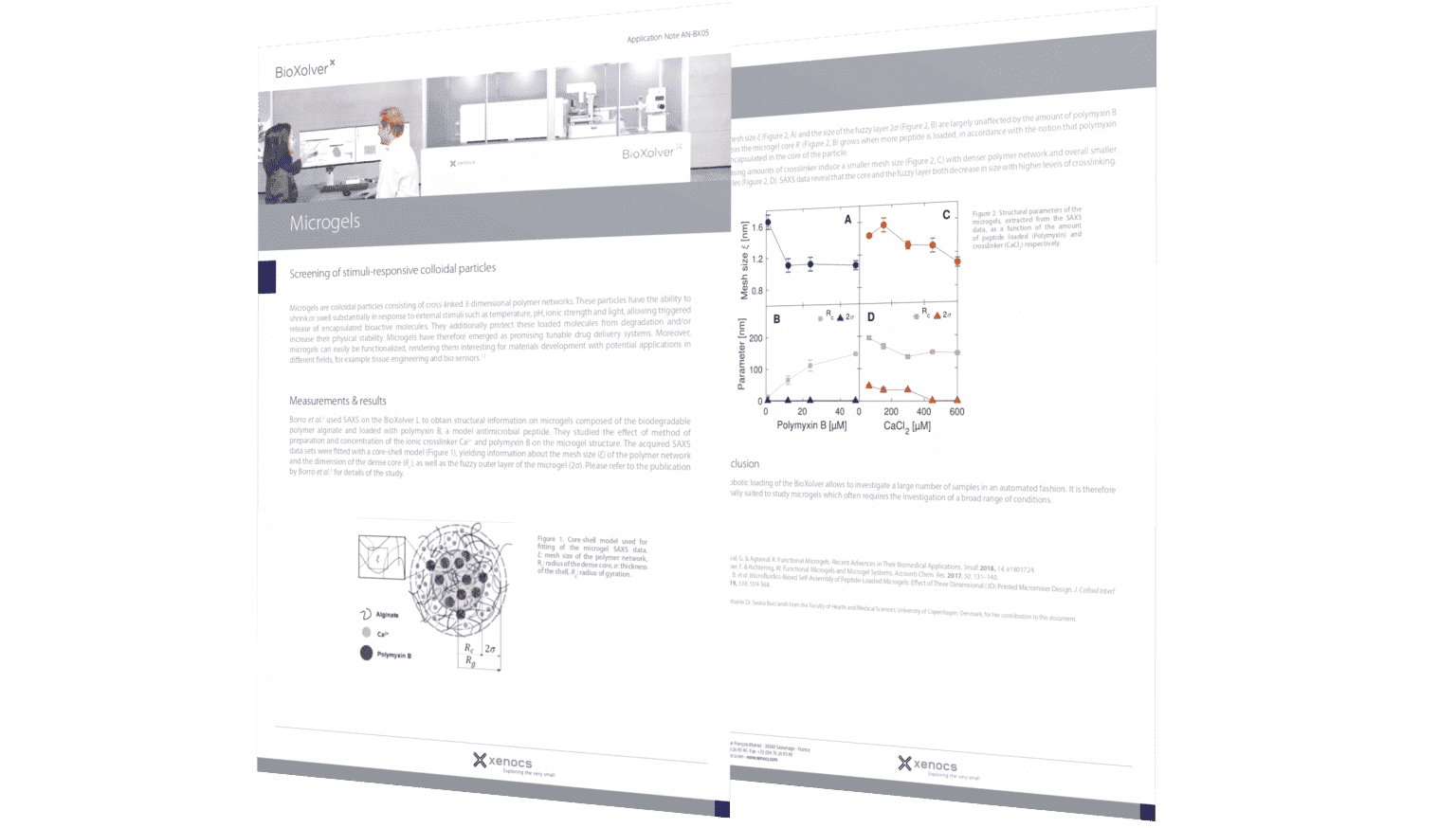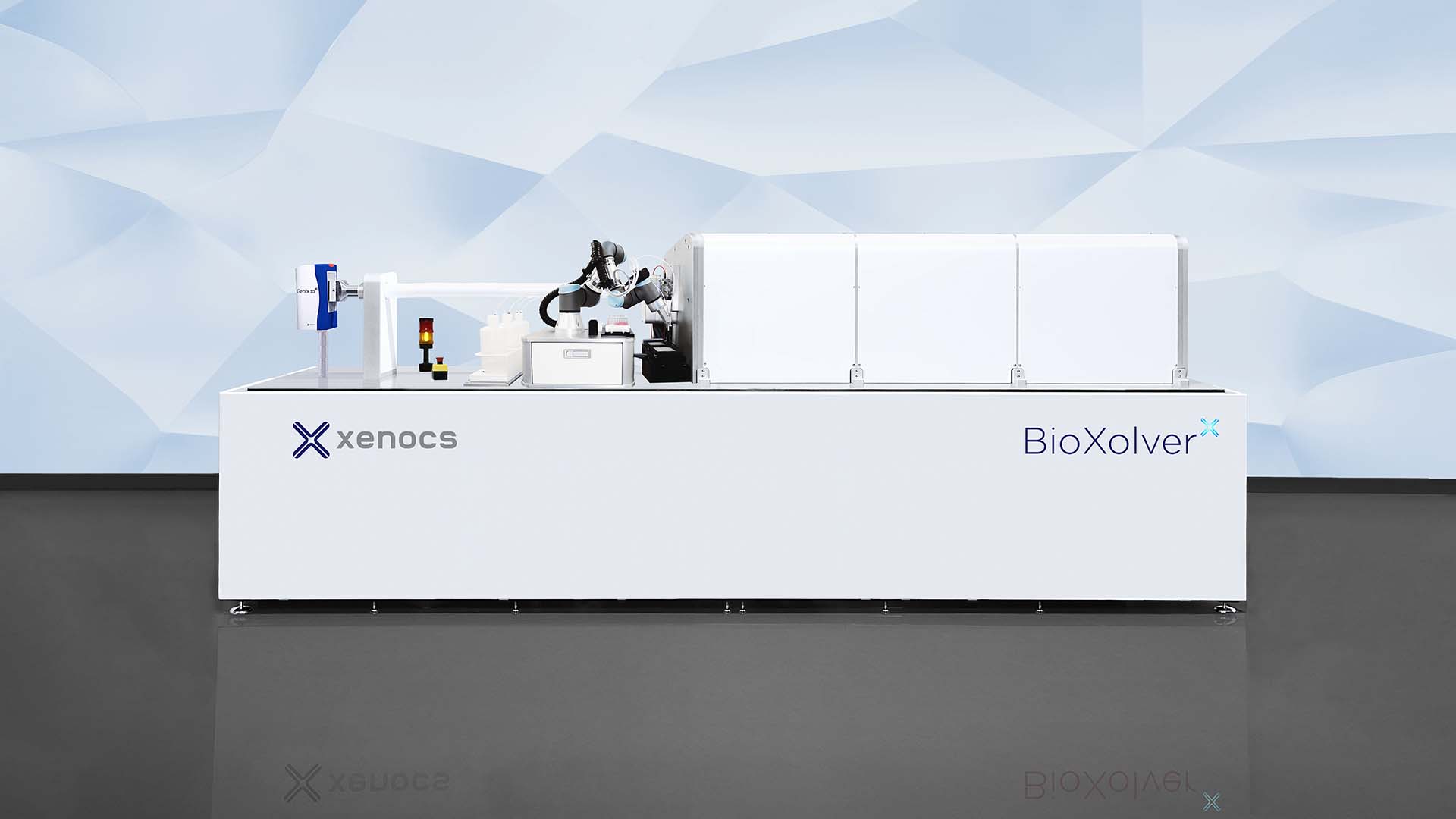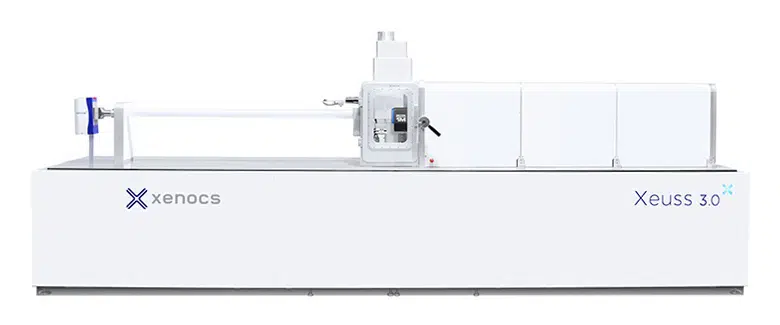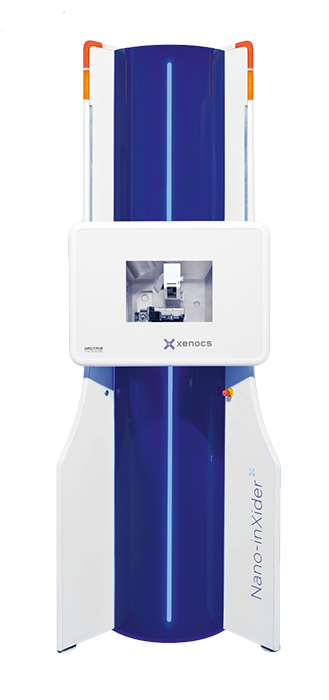Screening of stimuli-responsive colloidal particles
Introduction
Microgels are colloidal particles consisting of cross-linked 3-dimensional polymer networks. These particles have the ability to shrink or swell substantially in response to external stimuli such as temperature, pH, ionic strength and light, allowing triggered release of encapsulated bioactive molecules. They additionally protect these loaded molecules from degradation and/or increase their physical stability. Microgels have therefore emerged as promising tunable drug delivery systems. Moreover, microgels can easily be functionalized, rendering them interesting for materials development with potential applications in different fields, for example tissue engineering and bio sensors1,2.
Measurements & results
Borro et al.3 used SAXS on the BioXolver L to obtain structural information on microgels composed of the biodegradable polymer alginate and loaded with polymyxin B, a model antimicrobial peptide. They studied the effect of method of preparation and concentration of the ionic crosslinker Ca2+ and polymyxin B on the microgel structure. The acquired SAXS data sets were fitted with a core-shell model (Figure 1), yielding information about the mesh size (ξ) of the polymer network and the dimension of the dense core (Rc), as well as the fuzzy outer layer of the microgel (2σ). Please refer to the publication by Borro et al.3 for details of the study.
The mesh size ξ (Figure 2, A) and the size of the fuzzy layer 2σ (Figure 2, B) are largely unaffected by the amount of polymyxin B whereas the microgel core Rc (Figure 2, B) grows when more peptide is loaded, in accordance with the notion that polymyxin B is encapsulated in the core of the particle.
[…]
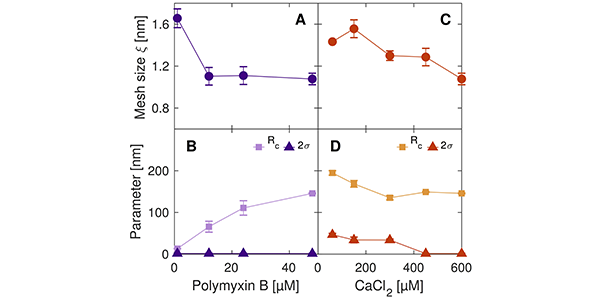
Figure 2. Structural parameters of the microgels, extracted from the SAXS data, as a function of the amount of peptide loaded (Polymyxin) and crosslinker (CaCl2) respectively.
3 Borro, B. et al. Microfluidics-Based Self-Assembly of Peptide-Loaded Microgels: Effect of Three Dimensional (3D) Printed Micromixer Design. J. Colloid Interf. Sci. 2019, 538, 559-568.
